
Welcome to the homepage of the lecture
Correspondence Problems in Computer Vision
Summer Term 2015
Home
About Us
People
Teaching
Research
Publications
Awards
Links
Contact
Internal
Correspondence Problems in Computer Vision
Computer Science Teaching Award (summer term 2008)
Lecturer:
Sebastian Hoffmann
Office hours: by appointment.
Examiner:
Prof. Dr. Joachim Weickert
Summer Term 2015
Lectures (2h) with programming/theoretical exercises (2h)
(6 credit points)
Lectures: Mondays 16-18 c.t.
Lectures: building E 1.3, lecture hall 001
First lecture: Friday, April 24, 2015, 12-14 c.t.
Tutorials: 2 hours each week, Friday, 12-14 c.t.
Tutorials: either building E1.3, lecture hall 001 (theory)
Tutorials: or building E1.3, CIP-pool 104 (programming)
First tutorial: Friday, May 08, 2015 (programming)
| 29/09/2015: | The results of the second written exam are available here. |
| 10/08/2015: | The results of the first written exam are available here. |
| 21/07/2015: | A sample exam can be found here. |
| 04/05/2015: | The registration is closed. |
| 24/04/2015: | The registration is open, see here. |
| 10/02/2015: | The first lecture is shifted to Friday, April 24, 12-14 c.t., building E 1.3, lecture hall 001, to avoid colisions with introductory meetings. |
| 10/02/2015: | The course homepage is online. Important news will be posted here. |
Synopsis – Prerequisites – Registration – Contents – Tutorials and Assignments – Exams – References
Example - Stereo Reconstruction
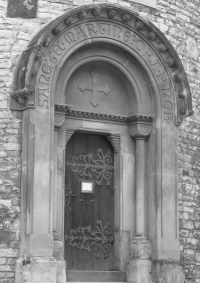 |
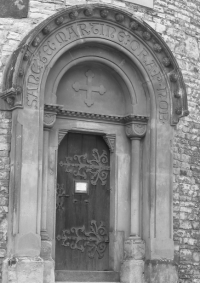 |
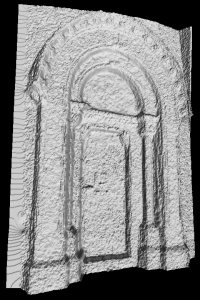 |
Example - Motion Estimation
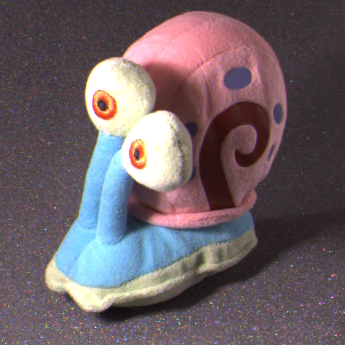 |
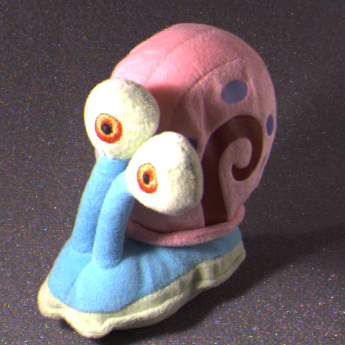 |
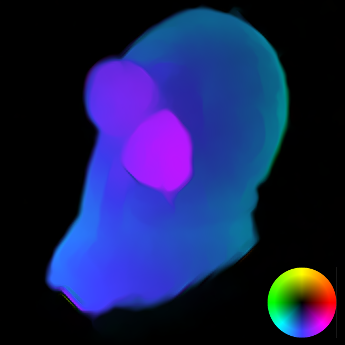 |
Correspondence problems are a central topic in computer vision. The basic
task amounts to identifying and matching corresponding
features in different images/views of the same scene. Typical examples for
correspondence problems are (i) the estimation of motion information from
consecutive frames of an image sequence (optic flow), (ii) the reconstruction
of a 3-D scene from a stereo image pair and (iii) the registration of medical
image data from different image acquisition devices (e.g. CT and MRT).
The central part of this lecture is concerned with discussing the most important
correspondence problems together with suitable algorithms for their solution.
Suited for students of visual computing, applied mathematics and computer science. Requires undergraduate knowledge in mathematics (e.g. ''Mathematik für Informatiker I-III'') and elementary C knowledge (for the programming assignments). Knowledge in image processing or differential equations is useful. The lectures will be given in English.
In order to participate in the lecture/exam you have to register twice:
- Firstly, you have to register online to the system of the MIA group. This gives us an estimate of the number of students attending the course and allows us to issue the certificates at the end of the semester. You could have registered for this lecture between April, 24, 2015, and May 4, 2015.
- Secondly, depending on your field of study, you have to register online for the lecture/exam in the general system of Saarland University: the HISPOS system.
Participants of the course can download the lecture materials here shortly before the lecture
(access is password-protected). However, be aware that these slides are only provided
to support the classroom teaching, not to replace it. Additional organisational information,
such as examples and explanations that may be helpful or necessary to understand the content
of the course (and thus relevant for the exam), will be provided in the lectures. It is
solely your responsibility - not ours - to make sure that you receive this infomation. The
following table shows a preliminary list of topics that will be covered during the semester.
| Date | Lecture | Topic |
|---|---|---|
| 24/04 | Lecture 01 | Introduction, Overview |
| 27/04 | Lecture 02 | Block Matching, Correlation Methods, Occlusion Detection, Interest Points, Feature Methods |
| 04/05 | Lecture 03 | Optic Flow I: Local Differential Methods, Parametrisation Models |
| 11/05 | Lecture 04 | Optic Flow II: Global Differential Methods, Horn and Schunck |
| 18/05 | Lecture 05 | Optic Flow III: Advanced Constancy Assumptions, Large Motion |
| 01/06 | Lecture 06 | Optic Flow IV: Advanced Data and Smoothness Terms |
| 08/06 | Lecture 07 | Optic Flow V: High Accuracy Methods |
| 15/06 | Lecture 08 | Optic Flow VI: Advanced Numerics |
| 22/06 | Lecture 09 | Stereo Matching I: Projective and Epipolar Geometry |
| 29/06 | Lecture 10 | Stereo Matching II: Estimation of the Fundamental Matrix |
| 06/07 | Lecture 11 | Optic Flow + Stereo: Scene Flow Estimation |
| 13/07 | Lecture 12 | Medical Image Registration: Mutual Information, Elastic and Curvature Based Registration, Landmarks |
| 20/07 | Lecture 13 | Particle Image Velocimetry: Div-Curl-Regularisation, Incompressible Navier Stokes Prior |
| 27/07 | Lecture 14 | Summary, Outlook |
The weekly tutorials alternate between theory and programming. They take place in:
Building E1.3, lecture hall 001 (theory)
Building E1.3, CIP-pool 104 (programming)
Programming excercises and theoretical assignments are offered as part of the tutorials.
The regular attendance of these tutorials is required for the admission to the exams.
You will not be allowed to take part in the exams if you miss more than two tutorials.
The assignments,the source code needed for the programming assignments as well as example solutions for all the assignments will be provided here during the semester.
| Date | Assignment | Topic | Material | Solution |
|---|---|---|---|---|
| 08/05 | Assignment P01 | Block Matching | sources | solution |
| 15/05 | Assignment T02 | Sub-Pixel Refinement, Taylor Linearisation, Minimization of the Lucas/Kanade Method | solution | |
| 22/05 | Assignment P03 | Horn and Schunck Method | sources | solution |
| 29/05 | Assignment T04 | Motion Tensor Notation, Affine Horn and Schunck, Photometric Invariants, Incremental Energy | solution | |
| 05/06 | Assignment P05 | Gradient Constancy and Backward Registration | sources | solution |
| 12/06 | Assignment T06 | Dataterm Robustification, Gauss-Seidel with Warping | solution | |
| 19/06 | Assignment T07 | Smoothness Terms | solution | |
| 26/06 | Assignment P08 | Coarse-to-Fine Warping | sources | solution |
| 03/07 | Assignment T09 | Fundamental Matrix, Stereo Reconstruction | solution | |
| 10/07 | Assignment P10 | Fundamental Matrix Estimation | sources | solution |
| 17/07 | Assignment T11 | Variational Optic Flow with Epipolar Term | solution | |
| 24/07 | Assignment P12 | Mutal Information | sources | solution |
A sample exam can be found below. It is designed to provide problems similar to the real exam.
| Sample Exam Questions | Solution of Sample Exam Questions |
There will be two closed book, written exams:
The first written exam will take place on
Tuesday, August 04, 2015, 10-12, building E1.3, lecture hall 002.
The second written exam will take place on
Tuesday, September 22, 2015, 14-16, building E1.3, lecture hall 002.
In order to qualify for the exams, attendance of the tutorials is mandatory.
You will not be allowed to take part in the exams if you miss more than two tutorials.
In case of qualification, you are allowed to take part in both exams. The final grade
will be the best grade out of the two exams.
Please remember that you have to register online for the lecture/exam in the
HISPOS system of the Saarland University
The results of the first written exam
can be found
here.
Each student who has participated in the first written exam had the
opportunity to inspect his/her graded solutions in room 4.10, building E1.7, on
Friday, August 14, 2015, between 10 a.m. and 12 a.m.
The results of the second written exam
can be found
here.
Each student who has participated in the second written exam has the
opportunity to inspect his/her graded solutions in room 4.10, building E1.7, on
Friday, October 9, 2015, between 10 a.m. and 12 a.m.
There is no specific book that covers the complete content of this class. Many lectures will be based on articles from journals and conferences. However, the following three books cover most topics:
- Optic Flow
A. Bruhn: Variational Optic Flow Computation: Accurate Modeling and Efficient Numerics.
Ph.D. Thesis, 2006. Available from /bruhn/PhDThesis.pdf
- Stereo Reconstruction
L. Valgaerts: Variational 3D Reconstruction from Stereo Image Pairs and Stereo Sequences
Ph.D. Thesis, 2011. Available from http://www.mpi-inf.mpg.de/~valgaerts/pubs/valgaerts_phdthesis.pdf
- Medical Image Registration
J. Modersitzki: Numerical Methods for Image Registration. Oxford Press, 2003.
MIA Group
©2001-2023
The author is not
responsible for
the content of
external pages.
Imprint -
Data protection